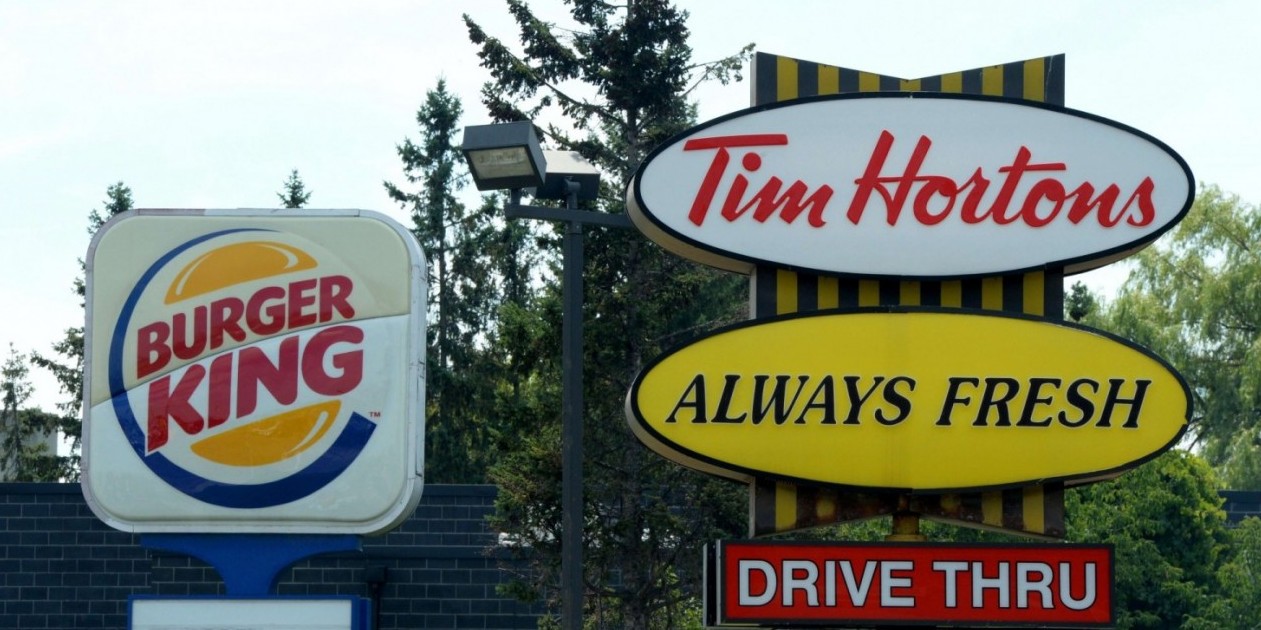It was supposed to ruin the company, the economy and your morning cup of coffee when Tim Hortons merged in 2014 with Burger King, owned by Brazilian private equity firm 3G Capital. One professor told the CBC that the doughnut chain would soon suffer “death by a thousand cuts.” The Canadian Centre for Policy Alternatives warned of mass layoffs and reduced tax revenue. “Canadians will end up paying more for lower-quality doughnuts and coffee,” the think-tank argued.
Nearly two years later, this hand-wringing seems comically pessimistic. Foreign ownership has been great for Tim Hortons.
Before its purchase, the coffee company wasn’t in trouble—but it had troubles. The Canadian market was approaching its point of maximum caffeination. The chain’s attempts to expand into the United States yielded only a smattering of locations and loads of humiliation. Tim Hortons still dominated coffee sales in Canada, but struggled to entice customers to move beyond java, doughnuts and the occasional bowl of soup. The company’s tested strategy had lost potency; it needed to tweak the recipe.
And it has—with notable inspiration from Burger King. After being acquired by 3G, the Whopper chain went from opening 150 outlets annually to 700, with a plan built on cutting costs, introducing novelty menu items and finding regional partners to support expansion. Tim Hortons is now following the same strategy. It began with job losses, from the closure of its U.S. headquarters, plus 350 employees laid off in Canada. In a six-month period, the company saved more than $18 million in administrative costs as a result of these measures. While undeniably difficult, the cuts weren’t as vicious as critics predicted.
As it contained costs, Tim Hortons also expanded its menu with more attention-grabbing offerings. Burger King had demonstrated how to lure curious consumers with “chicken fries” and burgers with names like the “A.1. Halloween Whopper.” In the world of doughnuts, this quest for novelty translated into Nutella-filled pastries and constant tweaks to the meat and bread used to produce breakfast sandwiches.
Perhaps the biggest lesson from the King is found in Tims’ new approach to U.S. expansion. When Burger King pushed into France and India, the chain worked with partners that understood the market. Tim Hortons needed similar help, albeit far closer to its home office. In February, the company announced plans to open locations in Indiana in conjunction with Luke, a firm that operates 60 gas stations and convenience stores there. It has similar arrangements for Cincinnati and Columbus, Ohio. This regional approach isn’t as flashy as Tims’ attempt to take Manhattan in 2010, but it’s far more likely to succeed. Tim Hortons grew in Canada by starting with rural communities and small cities, and worrying about the bigger urban markets later.
The company’s executives have even suggested they’ll follow Burger King’s cadence of expansion by taking plenty of time on the initial projects and then accelerating once the model is sound. Even with a slow start, there’s far less chatter today about Tim Hortons’ perilous future. Sales grew by 5.6% in 2015 and the chain added 155 new stores. All of this amounts to the strengthening of a Canadian brand through foreign ownership, not the diminishment of it. Best of all, the coffee still tastes exactly the same.
This article originally appeared at CanadianBusiness.com.











